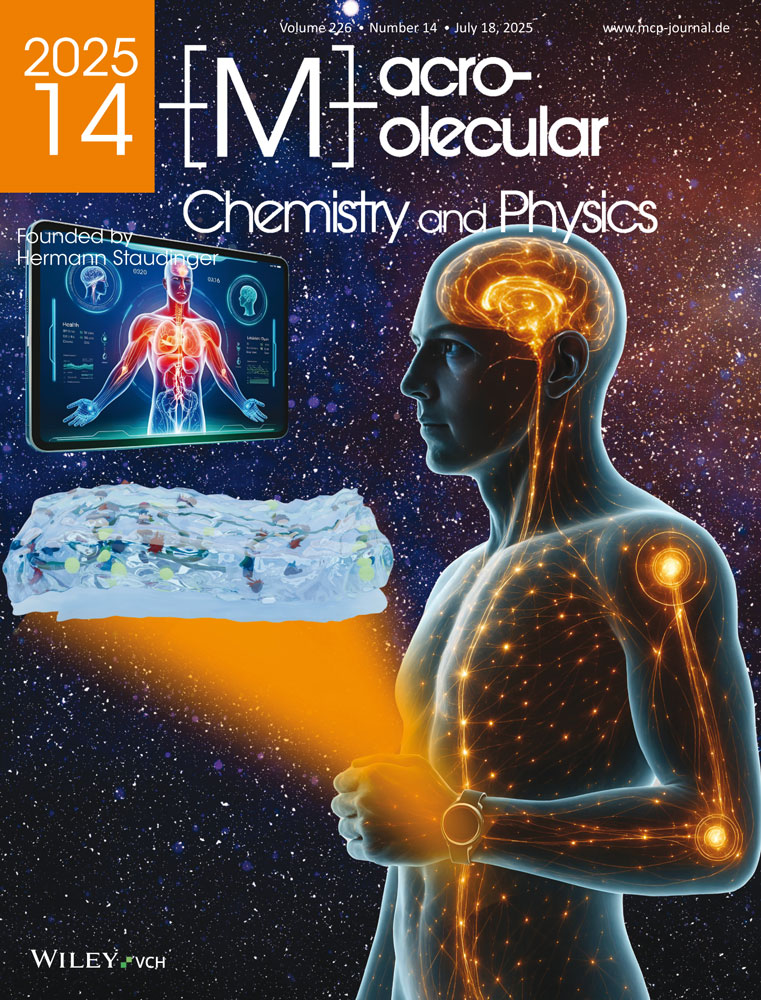Oriented Quiescent Crystallization of Polyethylene Studied by USAXS
Abstract
Summary: Highly oriented high-pressure injection-molded (HPIM) rods from polyethylene (PE) were heated until the discrete small-angle X-ray scattering (SAXS) had vanished. Thereafter, non-isothermal and isothermal crystallization was investigated in situ by means of ultra small-angle X-ray scattering (USAXS). The orientation of the crystallites could be controlled by choice of the melt annealing temperature (shish-kebab model: memory or self-nucleation effect caused by stable shishs). Both the scattering patterns and the multidimensional chord distribution function (CDF) were interpreted. A three-stage model of crystallization was also developed. This model comprises row structure nucleation, the almost statistical insertion of extended lamellae and finally the insertion of blocky crystallites. It was found that the nanostructure evolution in the isotropic fraction of the material was the same as in the highly oriented one. The lateral extension of the lamellae was largest during isothermal crystallization. The correlation among domains was increased by non-isothermal crystallization. The shishs in the core of the HPIM rod appeared less stable than those in the shell. Lobe-shaped reflections observed during and after quenching were not due to an orientation distribution of layer stacks, but reflected a correlation between long period and lateral extension of crystallites. During quenching, a lateral modulation of the layer peaks in the CDF grew stronger and showed the arrangement of block-shaped crystals proposed by Strobl to be the precursors of lamellae. The thin crystals formed during rapid cooling were built from a central block surrounded by one or two rings of satellites. The long period observed in the scattering pattern during quenching is due to correlations among crystalline blocks in a chain, and not from correlations among lamellae.





